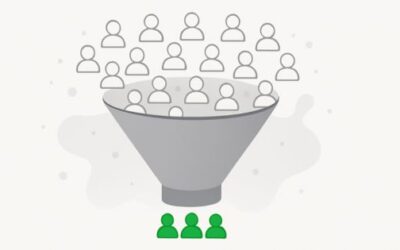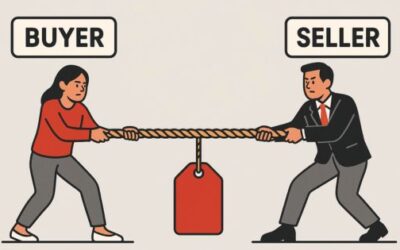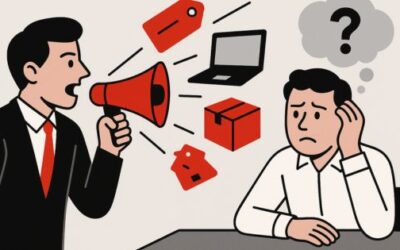The Sales Strategy that Made a Skatepark a Reality
This is how my feisty 14 year old self accidentally Gap Sold my town into building a skatepark.
Buckle up! Because I’m going to walk you through my development of a sales strategy and a 2 year sales cycle.
Sales Lessons from the Streets
It all started back in the 90s when my older brother was out on his BMX bike and decided to bunny hop a picnic table. His lovely summer afternoon turned into getting arrested for breaking and entering, destruction of property, and trespassing. The police didn’t notify our parents and instead detained him for hours until we finally got the call well after dark.
So the next morning, my mother was still raging at the situation. This had become a regular occurrence in our community, and she was over it. She demanded, “we need to protest!”
Enter, me…14 years old about to go into high school and filled with sass. “Mom…seriously! A bunch of loud parents yelling at the town isn’t going to do anything.”
My mother, being the source of my sass, crossed her arms and said, “alright fine…then what do YOU propose?”
“Protesting with other mad parents will only look like mad parents of deviant kids. It seems to me, the issue is really being created by the lack of a facility. We need a skatepark so kids aren’t just on the streets. How about we start a petition for a skatepark?”
Within hours, the petition was born! We gathered all of our friends, gave them sets of petition papers, divided the community into target segments of most impacted locations, and went out door-to-door.
Our First Lessons in Objection Handling
Our first “yes” of the sales cycle was “yes” from the greater community via petition signatures.
I even equipped my fellow teenage friends with some objection handling training.
“If they say building a skatepark will encourage the sport making the problem worse in the community, tell them it’s the fastest growing sport in the US today so it’s growing with or without a facility. Then highlight that the reason kids are on the streets is because they have no where else to practice. Don’t you think these kids would be happier in a proper skatepark than your parking lot?”
I even gave them some provoking questions too…”have you ever thought about the fact that extreme sports are primarily in low socioeconomic areas? Have you thought about what it means to take away this positive outlet from kids who are statistically prone to drugs and crime?”
For the Gap Sellers here, you should start to see my problem identification chart coming forward. My root cause analysis highlights the lack of a skatepark. Day 1, I’m unpacking the problems and impacts from the perspective of the youth.
But the Gap gets soooo much bigger.
What Motivates Them?
Our team of teenagers collected 314 signatures in the first day, and the following day happened to be our town council meeting.
When we first arrived, 20+ teenagers, no one really reacted. Maybe they thought it was a school project?
When I stood up to present, they jumped out of their seats, particularly the Director of Parks and Recreation, who looked enraged, panicked, and shocked.
After the town council meeting though, I got home and instantly looked at my mother and said, “it’s not enough. A petition isn’t enough to motivate change. Not having a skatepark is a problem for the kids who want it, but it’s not a problem for them.”
Side bar, at 14 years old, I didn’t have a PIC or concept of a business problem vs a technical problem. I knew the technical root cause was the lack of the skatepark. But I was struggling with the business case. I did know that the community wanting it and the pain symptoms were NOT enough…
My brain was on hyperdrive thinking about what motivates them when I paused…”Mom!!! How are THEY measured?”
From my research, I decided that beyond the parks and recreation responsibility, the council is also responsible for the health and wellness of the local economy and safety of the people.
So I now have two more problem areas I need to understand: local business owners and the police.
I went straight to the B2B sale. I asked my brothers friends, “what are your favorite places to ride?” These businesses became my target audience and really a sale within a sale.
The B2B Sales Strategy: A Risk-Based Sale
I went to the business owners of those favorite places to learn their perspectives. Over and over, it was really the same fear: liability. They had no interest in calling the cops on an 11 year old skateboarding, but the gripping fear of that same 11 year old sliding down their handrail, falling, and breaking their neck on their property was worse.
I found myself in a B2B, risk-based sale.
Through my discovery with these businesses, I was able to not only learn their problems and impacts, I was also able to get them on board with my root cause diagnostic and potential solution.
They didn’t just sign my petition, they placed the petition in their businesses…all of them.
We went from 100s to 1000s of signatures weekly with those businesses prompting their customers.
More so, I could share my conversations with those business owners around their fears of bankruptcy from liability claims, how their sales have reduced with the presence of teenagers loitering, and incidents that have taken place already resulting in injury and damaged property. I could voice, measure, and demonstrate the negative impacts on the local businesses.
But I wasn’t done expanding the Gap…I still had public safety to unpack. And in this case, that meant getting the police to talk to me.
Data-Driven Impacts
I simply couldn’t believe any police officer felt good about arresting or harassing kids. There had to be more to their story.
I knew of a nice officer who patrolled the elementary school so I went to talk to him, knowing his patrol schedule.
While he couldn’t answer my questions while on duty, he agreed to talk to me after and brought along other officers!
In my discovery, I first learned their perspectives. They hated having to arrest or confront kids. They felt they had no other choice though. Their emotional state was filled with anxiety, frustration, and guilt.
One officer dropped a clue (similar to your customers salespeople!)…he said, “every day we are having to deal with these situations…and you dread it.”
Quantifying the Impact
My brain spiked…every day? Every officer?
“How many calls do you get per day to this?”
“How many officers per day are in a dispatch rotation?”
“How long does each call take you?”
Question after question, I started realizing a very real and serious cost to public safety.
Then the real question hit me, as I kept mentally calculating the data, “has your response time to calls increased?” And there it was…our police force’s response time had more than doubled from the year prior.
“Have you ever been unable to quickly dispatch to a real emergency?”
“Has the police chief discussed any plans to improve response time?”
“How many new officers will be required to hire?”
With each question, the impact to public safety was unfolding.
Similar to my local business owners, I made my case to the police. I shared my root cause diagnostic and proposed solution.
I gained the support of the police force (or most of them).
My First Stalled Deal
Entering the next town council meeting, I now came with 3 binders of documents. The first containing thousands of petition signatures. The second containing an assessment of how the situation is impacting local business. I specifically connected the data and feedback to their KPI’s as a town council.
And the 3rd, a data driven diagnostic of the risk assessment for public safety.
That third binder though…stirred up a storm of conversation! “How the hell did a freaking 14 year old land on this?” was the question on everyone’s faces.
It was the only time I observed true anger in the face of the Mayor. Not at me of course…but that she wasn’t aware of how significant the problem was in public safety.
Now, being a town council, I couldn’t hold a discovery with my decision makers. This meant no decision criteria, no buying process, little future state from their perspective…
I thought my discovery was complete. But like so many opportunities, my sale stalled as I sat in the dark to closed door conversations.
It took me MONTHS to realize what I was missing…
No Gap, No Sale
At this point, I’m now 15 and feeling defeated. All of that work for nothing. I really thought I had found enough to motivate change!
BUT, I had overlooked a key part of change management: people dislike change.
My brilliant mother highlighted that I have to understand what I’m asking them to do is REALLY outside of their comfort zone. There are no municipality owned skateparks around. Asking them to enter uncharted waters is really big ask.
“We need to talk to skatepark owners.”
The nearest skatepark was nearly a 3 hour drive so road trip!
I have to note here, I was VERY lucky that this particular skatepark owner didn’t feel the need to give me an “overview” or dumb down the business model. He spoke to me and treated me as an adult.
He started out, after understanding why I was there, by saying, “well, tell them that I can cover all operational costs from the water sales alone. That should get their attention.”
He walked through…
3 primary business models in the skatepark world
different types of skateparks
their maintenance needs
which ones do best in a coastal environment
which ones have higher up front costs
which ones are most profitable over time
which ones have lower incidents
Armed with all of the financial model information, we evaluated every single town park or recreation option to see what existed that could generate revenue.
It was in this research that we discovered the town had approved a massive 16 outdoor tennis court facility. Budgets, infrastructure, roads, land, parking…all ready to go.
“That’s our skatepark!”
I started to then learn everything about tennis courts. I needed to address the competition after all.
Crafting a Future State
We created a massive business case outlining profit projections, outlining maintenance requirements, outlining accidence risk, outlining to the best of our abilities the limited amount of changes that would have to occur to pivot the project, and outlining the supply and demand of tennis vs a skatepark.
I even went so far as to photograph existing tennis courts at multiple times a day showing objectively underutilized facilities.
I couldn’t show them THEIR desired future state specifically, but I could show them A desirable future state.
I ended it all by outlining that if they keep their tennis court plan, all the problems and impacts remain. If they pivot to this skatepark plan, that really isn’t that much change, those problems go away.
Change management was the key.
And MOST importantly, it was abundantly clear the change was worth it.
And now, I got my yes!
No Gap, No Sale
….and, Sold!
I was 18, off to college, no longer living in my home town when I got the call. The Mayor of my home town hunted down my cell phone number so she could personally call me and invite me to the ribbon cutting ceremony of the new skatepark. She asked if I would be willing to stand with her and personally cut the ribbon.
The group of 20+ teenagers from 4 years prior (see part one), are now all young adults. Most of us attended that ribbon cutting ceremony.
It was frankly cool to finally see it!
After we made our sale and got the “YES!” to a skatepark, we still spent another year making sure the town did it right.
They initially approved a small, basic skatepark. Like some attempt at a trial period. Sound familiar salespeople? This is like when your customers go with the cheap plan or piecemeal your recommendation to some minimal cost carnaged version.
We managed to consistently refocus the counsel on solving the problems. The small skatepark wouldn’t meet the supply/demand ratio which means they would only reduce the problem.
Eventually, we got them to build a large facility that not only met the current demand, but also accounted for the future demand.
We also managed to get the town to skip the full RFP process for contractors and instead go with the best in the business. There was one true skatepark designer at that time. We convinced them that hiring anyone else would increase their risk probably of accidents and repairs due to a lack of expertise.
Since no municipality had taken on a skatepark, we also convinced them to hold public forums and voting processes so they could understand the feedback from those within the sport.
Finally, why do I share this story in the first place?
I share this story, because I find that in life, when we don’t have a commission over our head or have the pressure of closing, I believe most of us are fairly natural at Problem-Centric Selling. Because we aren’t product-selling. We are problem-solving.
In Gap Selling, our training ends with, “have the empathy to understand what they are going through so you can help them get through.”








0 Comments